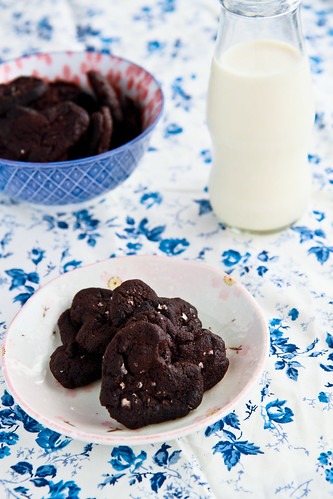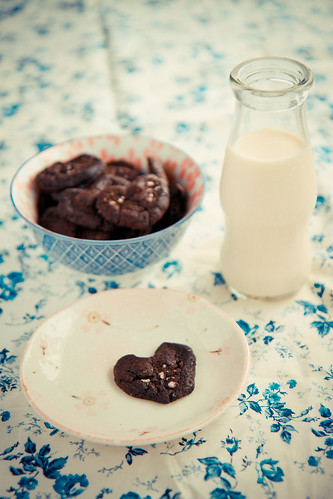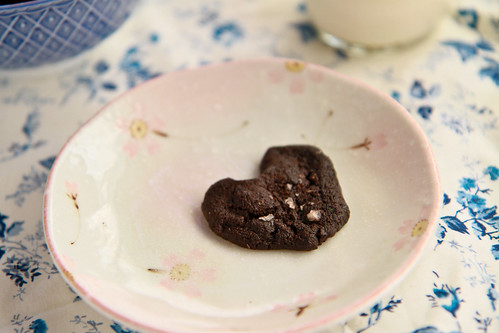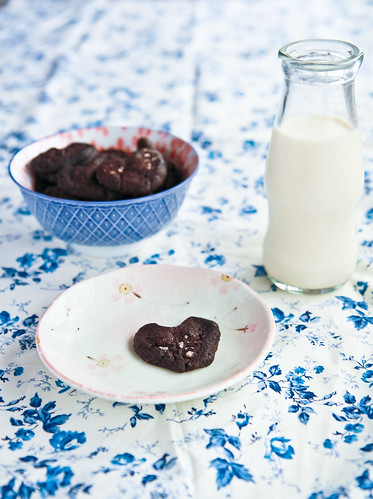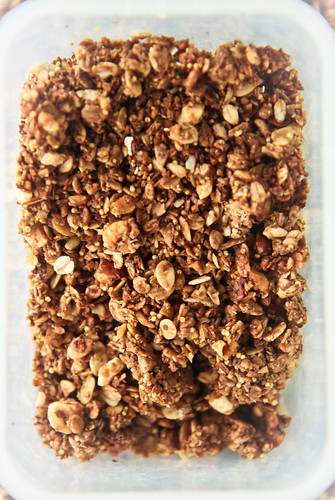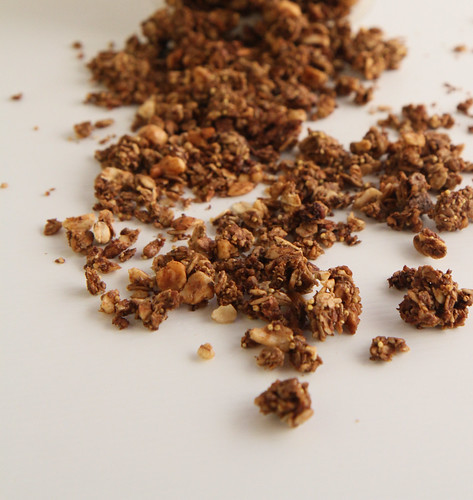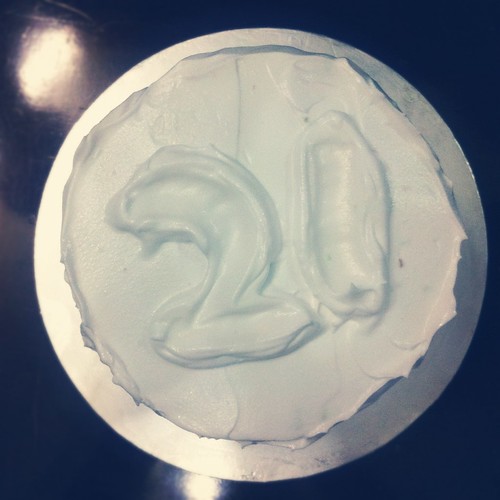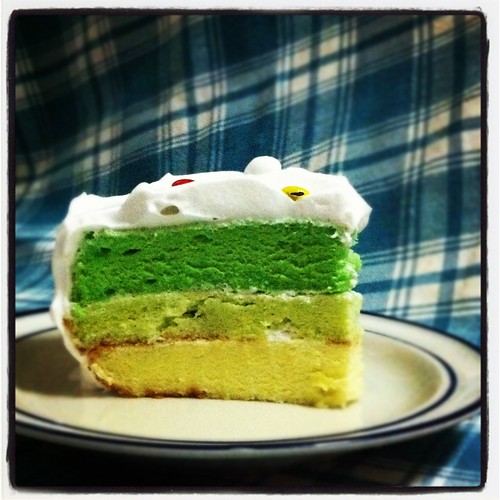A rose by any other name would smell as sweet.
This is a slightly bastardized translation of what is perhaps the most famous star-crossed lovers play in the world - Romeo & Juliet. This quote might not have a direct link to the post, but it just popped up in my head when I was thinking of how to start off this post. My point was, in a multi-racial society such as Singapore, ingredients will most likely than not be available in a variety of names - English, Malay, Mandarin, Tamil or perhaps their native names, whatever that may be. To further compound the problem, the same product might even have TWO different names, such as linseed and flaxseed (they are the same thing).
Earlier last year, I was on the hunt for a variety of flours, especially whole grain ones in a bid to build up my whole foods pantry and to introduce new flours/grains/seeds into my diet. I had some difficulty at first trying to identify flours, especially at Mustafa whose flours were mainly in Tamil/Hindi/Urdu, so I decided to compile a list after meticulously counter-checking with not only the staff, but other internet sources and native speakers of the language.
The following list is by no means comprehensive, but it has been of utmost help to me when grocery shopping, not only in Singapore, but in Malaysia and even Taiwan! (where I had to struggle with not just Mandarin names, but traditional Chinese :/) If there's anything wrong or if you have anything to add to the below table, please comment and let me know! :]
If time permits, I'll be coming up with a companion list to this, by indicating where in Singapore you can get your hands on some of these flours. It's still a work in progress so wait for it!
Simple Legend:
[m] stands for malay
[j] stands for japanese
[i] stands for tamil or hindi or any other indian dialect (sorry I don't know which is which)
This is a slightly bastardized translation of what is perhaps the most famous star-crossed lovers play in the world - Romeo & Juliet. This quote might not have a direct link to the post, but it just popped up in my head when I was thinking of how to start off this post. My point was, in a multi-racial society such as Singapore, ingredients will most likely than not be available in a variety of names - English, Malay, Mandarin, Tamil or perhaps their native names, whatever that may be. To further compound the problem, the same product might even have TWO different names, such as linseed and flaxseed (they are the same thing).
Earlier last year, I was on the hunt for a variety of flours, especially whole grain ones in a bid to build up my whole foods pantry and to introduce new flours/grains/seeds into my diet. I had some difficulty at first trying to identify flours, especially at Mustafa whose flours were mainly in Tamil/Hindi/Urdu, so I decided to compile a list after meticulously counter-checking with not only the staff, but other internet sources and native speakers of the language.
The following list is by no means comprehensive, but it has been of utmost help to me when grocery shopping, not only in Singapore, but in Malaysia and even Taiwan! (where I had to struggle with not just Mandarin names, but traditional Chinese :/) If there's anything wrong or if you have anything to add to the below table, please comment and let me know! :]
If time permits, I'll be coming up with a companion list to this, by indicating where in Singapore you can get your hands on some of these flours. It's still a work in progress so wait for it!
Simple Legend:
[m] stands for malay
[j] stands for japanese
[i] stands for tamil or hindi or any other indian dialect (sorry I don't know which is which)
English Name
|
Chinese Name
|
Other names
|
More common flours
|
||
All-
purpose flour, plain flour, rose flour
|
麵粉, 中筋麵粉
|
Tepung
Gandum [m]
Tepung
seberguna [m]
|
Bread
flour, high protein flour
|
高筋麵粉, 筋麵, 根麵, 高根粉
|
Tepung
roti [m]
|
Cake
flour, pastry flour, superfine flour
|
低筋麵粉, 低根粉
|
Hakurikiko,
薄力粉
[j]
|
Pau
flour, Hong Kong Flour
|
香港面粉
|
|
Self-raising
flour
|
自發麵粉
|
Tepung
naik sendiri [m]
|
Almond
flour /meal
|
杏仁粉
|
|
Amaranth
|
苋菜, 苋米
|
Rajgira
[i]
|
Arrowroot
|
葛粉
|
Tikora/Paniphal
[i]
Kuzuko
[j]
|
Barley
Flour
|
大麦面粉, 薏仁粉
|
Jav
flour [i]
|
Black
gram/lentil
|
黑鹰嘴豆
|
Urid/urad
dhal [i]
|
Black
Chick Pea
|
黑鹰嘴豆
|
Kala
Chana [i]
|
Brown
Rice Flour
|
糙米粉
|
|
Buckwheat
|
乔麦粉, 苦蕎麥
|
Kotu/Kottu/Kuttu
[i]
|
Bulgur
|
小麦片
|
|
Cassava
flour
|
木薯粉
|
Gari
flour [Nigerian]
|
Chestnut
flour
|
栗粉
|
|
Chickpea
flour
|
鹰嘴豆面粉
|
Also
known as Garbanzo
Besan/gram
/chana [i]
|
Coconut
flour, dessicated coconut
|
椰絲, 椰茸, 椰子粉
|
Kelapa[m]
|
Cornstarch/flour
|
生粉, 玉米澱粉, 粟粉, 粟米粉, 玉米粉, 玉米澱粉
|
Makai
(white corn flour) [i]
Tepung
jagung [m]
|
Cornmeal/polenta
|
粗玉米豆粉
|
Makka
(coarser) [i]
Masa
harina [Spanish]
|
Corn
flour, blue
|
Harinilla
[Spanish]
|
|
Durum
Flour
|
硬粒小麦面粉
|
|
Flaxseed
flour
|
亚麻籽
|
Also
known as linseed
Jawas
[i]
|
Garbanzo
|
鹰嘴豆面粉
|
Kabuli
chana/besan/chana dhal [i]
|
Green
Bean flour, mung bean
|
綠豆粉
|
Hoen
Kwee: roasted green bean
|
Glutinous
Rice Flour
|
糯米粉
|
Shiratamako
白玉粉
[j]
|
Glutinous
Rice Flour, cooked
|
熟糯米粉, 糕粉
|
gao
fun [Cant.], koh fun
|
Kamut
flour
|
-
|
|
Millet,
common, white
|
粟 (糯小米)
|
|
Millet,
finger
|
稗, 䅟子
|
Ragi
[i]
|
Millet,
pearl, black
|
黍 (糯米黍), 珍珠稷, 珍珠黍
|
Bajra/kambu/bajri/Bajara
[i]
|
Mugwort
flour
|
艾蒿粉
|
Yomogiko
蓬粉
[j]
|
Multi-grain
flour
|
雜糧預拌粉
|
|
Oat
flour
|
燕麦粉
|
Jow/Jai/Jaun
[i]
|
Potato
flour/starch
|
生粉, 太白粉, 地瓜粉
|
Katakuriko
片栗粉
[j]
|
Pumpernickel
|
黑麦粉
|
Also
known as dark rye flour
|
Polenta
|
玉米粥
|
See
corn flour.
|
Quinoa
flour
|
藜麦面粉, 藜籽, 小小米, 奎藜籽
|
|
Rice
Flour (white rice flour)
|
粘米粉, 粘米粉, 黏米粉, 在來米粉, 在萊米粉, 再來米粉
|
Jyoshinko,
上新粉
[j]
Idli
Rava [i] (raw rice)
|
Rye
Flour
|
黑麦粉
|
Medium
rye
|
Sago
flour
|
沙谷粉
|
Tepung
Sagu [m]
|
Semolina
|
粗粉
|
Suji/Sugee/Sooji
[i]
|
Spelt
|
斯佩尔特小麦面粉
|
Vartani
[i]
|
Sorghum
|
高粱面粉
|
Jowar/Jwar/jowari/juwar
[i]
|
Soy,
soya flour
|
豆粉
|
Kinako
きな粉
[j]
|
Sweet
Potato flour
|
蕃薯粉, 地瓜粉
|
Tepung
ubi keledek [m]
|
Sweet
Rice Flour
|
糯米粉
|
Mochiko
[j]
|
Tapioca
Starch
|
樹薯粉, 木薯粉, 茨粉, 菱粉, 泰國生粉, 太白粉, 地瓜粉
|
Tepung
ubi kayu [m]
|
Teff
flour
|
画眉草面粉
|
|
Triticale
flour
|
小黑麦
|
|
Water
chestnut flour
|
荸荠粉
|
Singhada
atta /Singoda [i]
|
Wheat
bran
|
麦麸
|
|
Wheat
germ
|
小麥胚芽, 麥芽粉
|
|
Wheat
gluten
|
麵筋粉
|
|
Wheat
starch
|
澄麵粉
|
Tung
min
|
Whole
wheat flour
|
全麥麵粉
|
Also
known as wholemeal flour
|




